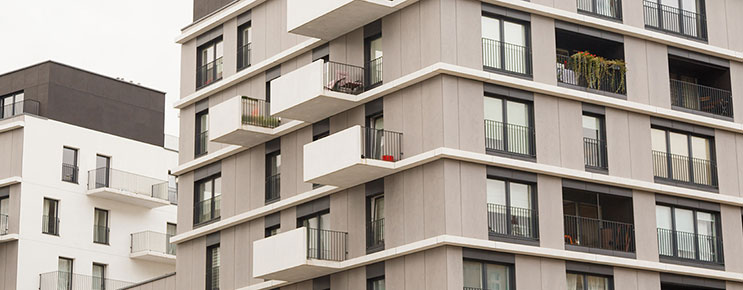May 10, 2023
Apartment Submetering vs. RUBS: A Guide for Landlords and Managers
Landlords at apartment buildings, mobile home parks and other multifamily dwellings have a choice when it comes to maximizing utility cost recovery. In this post, we break down apartment submetering vs. RUBS, including:
- What these utility billing systems are
- How to deploy each option
- The benefits of both
- When one is a better choice than the other
But before we dive into the choice of submetering vs. RUBS for your residential building, we should cover why you’d be choosing one of these methods in the first place.
Improving Utility Cost Recovery
Utilities like water and sewer, electricity and natural gas (to say nothing of internet, cable and trash) can dramatically affect a property’s net operating income. Every dollar a landlord can’t recover in utility costs eats into profits.
Enter utility allocation.
Submetering and RUBS (short for ratio utility billing system) are solutions designed to allow property owners and managers to fairly allocate utility costs among residents. In addition to dramatically improving utility cost recovery, both are shown to:
- Reduce unnecessary water, electric and gas usage
- Improve property values
The latter is particularly important, as a rough property value can be determined through the formula:
NOI/Market Cap Rate = Property Value
The greater the NOI, the greater the property’s value. And the better the utility cost recovery, the greater the net operating income.
Obviously, improving utility cost recovery is a good thing. Doing it justly and equitably is just as important.
That’s why submetering and RUBS exist. Before we compare the two, let’s briefly introduce them.
An Introduction to Submetering
Submetering is a type of utility billing system that allows property owners and managers to fairly allocate gas, water and electric costs to individual units within multifamily apartment buildings, homeowners’ associations and developments.
With a submetering arrangement, each unit or common area has its own utility meter beyond the master meter. This allows you to get exact readings on utility consumption. With this information, you can generate accurate bills for each of your residents, ensuring you recover your utility costs each month.
An Introduction to RUBS
Ratio utility billing, or RUBS, proportionally allocates costs for water, gas, electric, trash, cable and other services to residents based on an industry-accepted formula that takes into account unit size, layout, occupancy and more.
The RUBS method can be managed by the building owners or their management teams. It can be as simple as a pen-and-paper mathematical formula, but an easier and better way to do it is to work with a utility billing company that uses software to streamline the process and make it more accurate.
Submetering vs. RUBS: Which Is Better?
Now that we’ve covered what submetering and RUBS are, let’s cover the pros and cons, so you can make the right decision for your multifamily property.
Pros and Cons of Utility Submetering
Utility submetering involves the installation of physical meters for each residence downstream of the master meter. This allocates water, electric or gas usage for each unit, as well as common areas.
Meter readings are taken automatically (through a wireless connection) or manually and sent to a utility billing company. This firm produces and delivers a bill for each resident, collects payment, and remits it to the landlord. The landlord, meanwhile, pays the utility company and recovers all but common area costs.
True submetering is the most accurate method for determining each unit’s utility usage. Additionally, it:
- Provides rich data for utility system troubleshooting and leak detection
- Gives residents greater control over their own utility usage and costs
- Adds physical infrastructure, further increasing property value
Submetering, however, is more costly than RUBS. In older buildings, system configurations may not allow for submeter installation. And some states limit the ability to submeter utilities.
Pros and Cons of RUBS Billing
As we mentioned before, RUBS uses a formula for utility allocation. It does not require the installation or reading of submeters.
The biggest benefits of RUBS are ease and cost. It can be implemented simply and quickly since it is not necessary to purchase or install physical equipment. And a good utility billing provider can help you rapidly create an industry-accepted formula based on factors like:
- Unit square footage
- Number of occupants
- Amenities
- Number of bedrooms and bathrooms
Just like with submetering, a utility billing partner can create and deliver bills, collect payments and remit to the landlord monthly.
RUBS, however, is less precise than true submetering. Costs are estimated, giving residents less control over their usage and bill. Additionally, it does not offer data on usage in specific areas, reducing the ability to proactively fix mechanical issues.
Some states, such as North Carolina, Mississippi and Massachusetts, generally do not permit RUBS billing. Others, such as Florida (depending on the county) and Delaware (for newer systems), limit it in some cases. Working with a professional utility billing services company can help you parse out what is allowed in your district.
Submetering vs. RUBS: The Verdict
There is no one-size-fits-all answer to the question of submetering vs. RUBS. It depends entirely upon your situation, your facility and your needs.
Either allocation option, however, will increase utility cost recovery, driving NOI, tenant satisfaction and property value.



